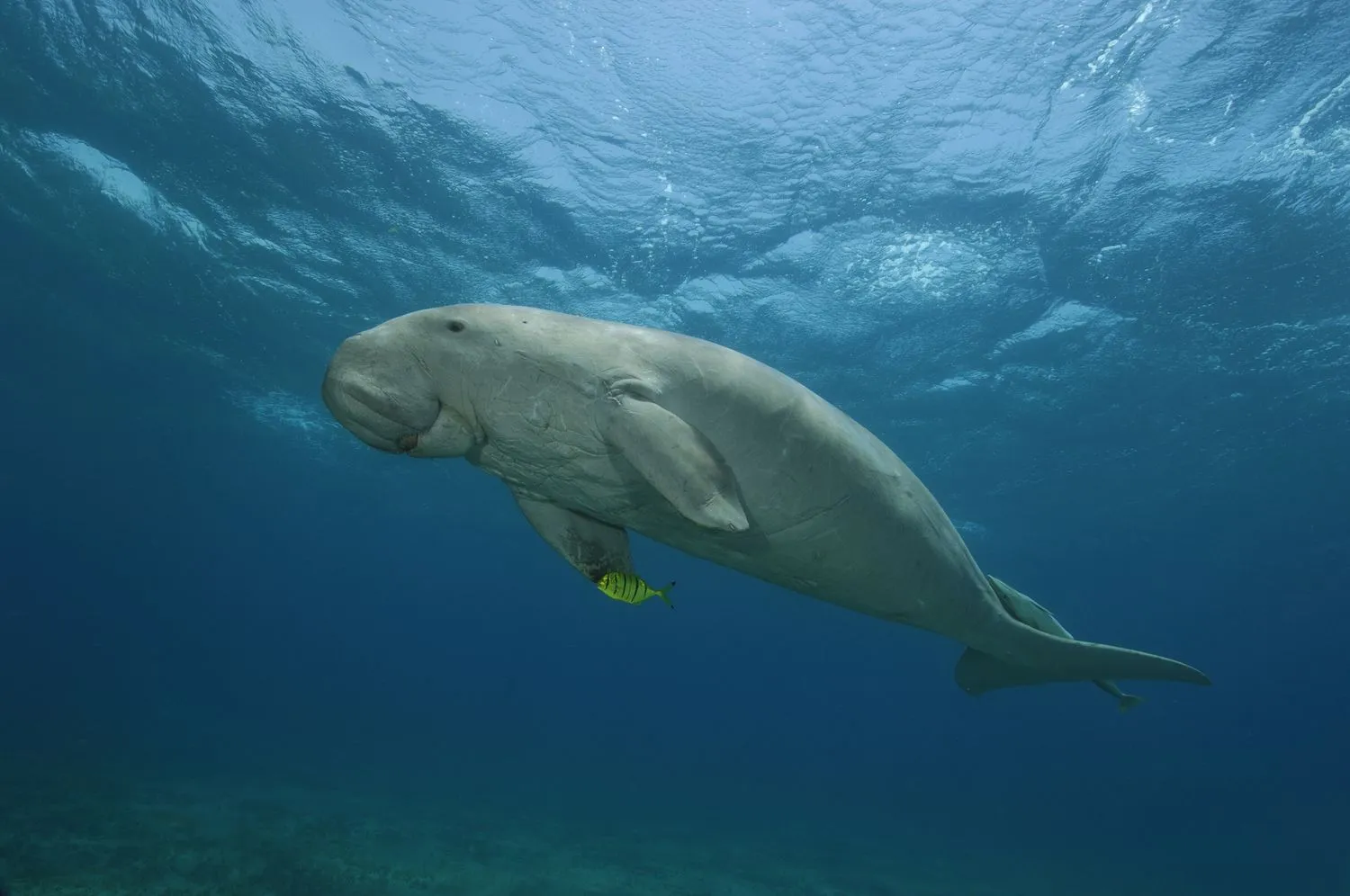Physical Address
304 North Cardinal St.
Dorchester Center, MA 02124

The dugong, often referred to as the “sea cow,” is a gentle marine mammal that glides through the shallow coastal waters of the Indo-Pacific. With its serene demeanor and herbivorous diet, the dugong plays a crucial role in maintaining the health of marine ecosystems. However, this remarkable creature faces numerous threats that put its survival at risk. This article explores the unique characteristics of the dugong, its ecological importance, and the urgent conservation efforts needed to protect this vulnerable species.
Dugongs are the only strictly marine herbivorous mammals, and their lineage dates back over 50 million years. These animals are closely related to manatees and share a common ancestor with elephants. Dugongs have a distinct appearance, with a streamlined body, paddle-like flippers, and a fluked tail similar to that of a dolphin. Their upper lip is large and muscular, perfect for foraging on seagrass, their primary food source.
Dugongs are often called “ecosystem engineers” due to their role in maintaining the health of seagrass beds, which are crucial habitats for a variety of marine life. By grazing on seagrass, dugongs help to promote new growth, prevent overgrowth of certain species, and maintain the overall diversity of the ecosystem. Their foraging behavior also contributes to the cycling of nutrients in coastal waters, making these areas more productive and supporting a wide range of species.
The dugong’s adaptations are specialized for its life in the sea. Its large lungs and dense bones help it to stay buoyant while grazing on seagrass beds. Dugongs can hold their breath for up to six minutes, allowing them to dive and feed in relatively shallow waters. Their sense of hearing is highly developed, helping them navigate and communicate in the often murky coastal waters they inhabit.
Although dugongs are often seen alone, they are not entirely solitary creatures. They can be found in pairs or small groups, especially mothers with their calves. Dugongs communicate with each other through a series of chirps, whistles, and barks, which are believed to help them maintain social bonds and coordinate movements, particularly during feeding.
Despite their peaceful existence, dugongs are classified as vulnerable to extinction by the International Union for Conservation of Nature (IUCN). Their populations have been declining due to several human-induced threats. Coastal development, pollution, and boat traffic have degraded and destroyed seagrass habitats, leaving dugongs with less food and fewer places to thrive. Additionally, dugongs are often accidentally caught in fishing nets, a problem known as bycatch, which can lead to injury or death.
Dugongs hold a special place in the cultures and traditions of many coastal communities. In some cultures, they are revered as symbols of peace and tranquility. Historically, dugongs were often mistaken for mermaids by sailors, giving rise to numerous myths and legends. In modern times, the dugong remains a symbol of the need to protect and preserve marine environments.
(A cave painting of a dugong – Tambun Cave, Perak, Malaysia)
Efforts to conserve dugongs are underway in many parts of their range. These include the establishment of marine protected areas, where human activities are restricted to minimize impacts on seagrass beds. Conservationists are also working to raise awareness about the importance of dugongs and the threats they face, encouraging local communities to participate in their protection. International collaborations are essential for ensuring that dugongs are protected across their range, as they often migrate between countries in search of food.
The dugong’s existence is a testament to the rich biodiversity of our oceans and the intricate balance of marine ecosystems. Protecting these gentle giants is not only about preserving a species but also about safeguarding the health of our oceans. By understanding the vital role dugongs play in maintaining marine ecosystems and recognizing the threats they face, we can take meaningful steps toward their conservation. This article has provided readers with valuable insights into the world of the dugong, emphasizing the importance of protecting this unique species for future generations.
In every line, this article offers new knowledge about the dugong, ensuring that readers leave with a deeper understanding of this remarkable animal and its place in the marine world.